In the Renaissance Army of Minnesota, a Group is like a branch, coordinating the training and personnel of a specific sphere or knowledge. The group is responsible for finding and training soldiers in their field, assembling those soldiers into units, and maintaining those units. Some are small and specific to one area of expertise, while others are large and broad in their scope.
Each group is commanded by an experience individual, whose purpose is to grow and expand the group to meet the RAM’s needs. The commander does not necessary command their deployed units in the field, only their education and maintenance. The commander’s official position is posted, if known.
A group’s headquarters is where the commander of the group holds and maintains their offices, if known.
Most groups have a Simple and an Official insignia for members of their group. A simple insignia is a basic design that can be added to any RAM uniform.This is common in regiments that don’t have to show off the ranks and roles of their personnel.
An official insignia is an article of uniform that is much more obvious, but less common outside of the Liberated Counties. Combat roles use shoulder-boards. Staff positions use aguilettes (cords hung from the shoulder) to differentiate roles. Many non-combat units use berets or other head wear.
Combat Groups
Combat Groups are responsible for forming the building blocks of future armies, the infantry companies and field platoons that wage war. The commander of a combat group does not lead the group, but acts more as an inspector, testing graduates of their respective courses and offering feedback to the training programs.
Combat groups tend towards simple colored shoulder ‘boards’, usually no more than a colored stripe of cloth from shoulder edge to neck. Rarely is this used outside of Walker County, at least for now.
Artillery Group
- Commander: Captain Thunder
- Headquarters: Unknown
- Simple Insignia: A bomb
- Official Insignia: Gold shoulder-boards
The Artillery Group trains combat soldiers in the use of mortars, artillery pieces and rockets. Though so far, only a few light mortars have been used by the RAM in their campaign.
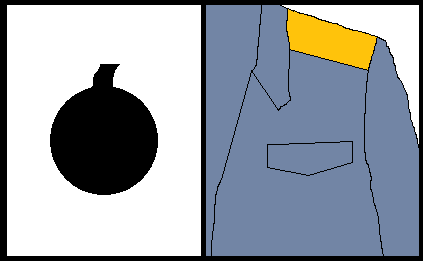
Cavalry Group
- Commander: Lieutenant Colonel Ranger
- Headquarters: Unknown
- Simple Insignia: Crossed swords
- Official Insignia: Blue shoulder-boards
The Cavalry Group trains soldiers in the art of cavalry warfare, including scouting, raiding and screening. The limited number of horses available has limited how many can be spared for cavalry units.
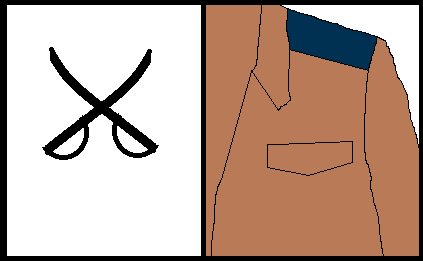
Field Group
- Commander: Major Fox, Special Services Group
- Headquarters: Unknown
- Simple Insignia: Crossed Axes
- Official Insignia: Green Shoulder Boards
The Field Group trains soldiers for the light warfare that the RAM uses to destabilize counties. Ambush tactics, living in the field, the sort of unconventional warfare yeomen were unprepared to face.
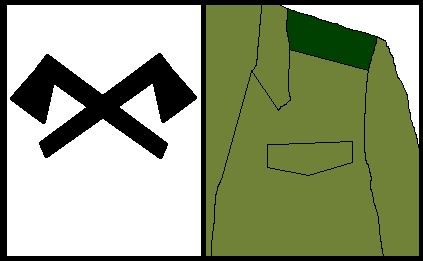
Infantry Group
- Commander: Colonel Senator, Commander, Combat Headquarters
- Headquarters: Sparta
- Simple Insignia: Crossed Rifles
- Official Insignia: Red Shoulder-Boards
The Infantry Group trains soldiers for the battles against the Royal Army that are expected in the not-too-distant future.
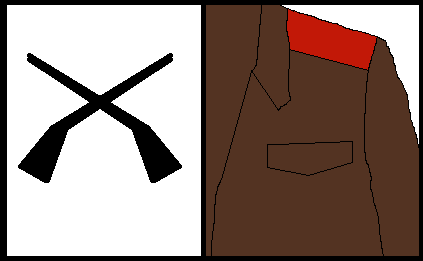
Non-Combat Groups
Non-Combat groups raise units that aide the RAM in ways other than fighting. From supplies to spiritual needs, these groups also spend a significant amount of time helping the civilians of the Liberated Counties. The commanders of non-combat groups are very hands-on individuals and are involved in their commands on a daily basis.
Chaplains Group
- Commander: Major Cross
- Headquarters: Holiday
- Simple Insignia: Religious Symbol
- Official Insignia: Gold Beret
The smallest group, the Chaplain’s Group is responsible for spiritual needs of the RAM. They operate through a handful of mobile churches.
The vast majority of personnel in the RAM are religious, and the Chaplain’s Group works to make sure the RAM has knowledgeable and respectful individuals to help their troops through any moral dilemmas or crisis of faith.
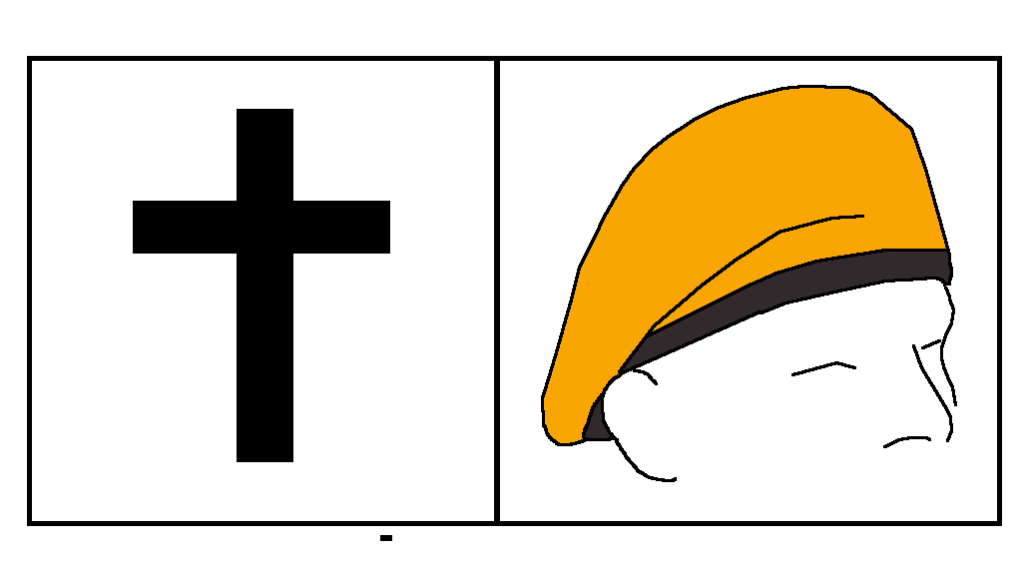
Engineering Group
- Commander: Lieutenant Colonel Archimedes
- Headquarters:
- SimpleInsignia:
- Construction: Hammer
- Pioneer: Hammer over Crossed Rifle
- OfficialInsignia:
- Construction: Green Beret
- Pioneer: Black Shoulder Board
The Engineering Group is actually two groups under one banner: the Construction Group, which is responsible for building RAM huts and improving the roads and bridges of the Liberated Counties; and the Pioneer Group, responsible for training combat engineer.
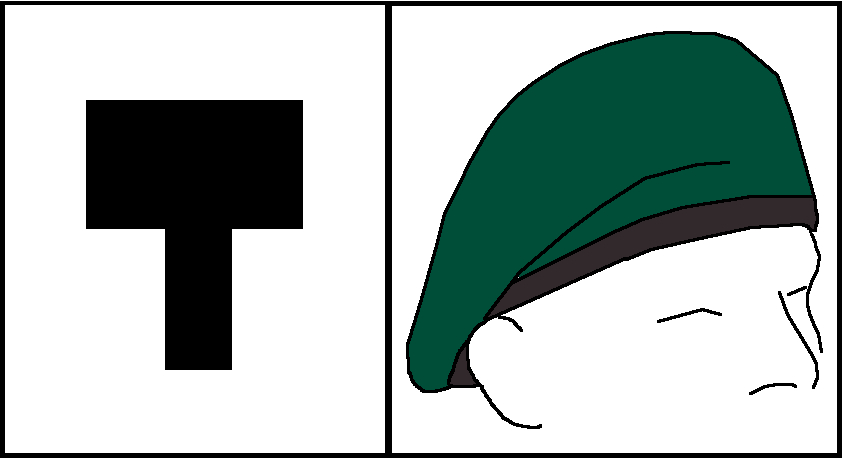
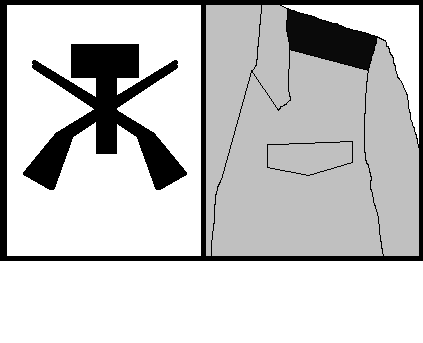
Medical Group
- Commander: Colonel Aristotle, Chief Medical Officer
- Headquarters: Holiday
- Simple Insignia: Red Cross / Cross
- Official Insignia: Red Beret
The Medical Group is responsible for the training of medical personnel, and the staffing of hospitals.
The second largest group in the RAM, the Medical Group also boasts the largest number of officers in one group, with well over twenty warrants and commissions. Their facility at Holiday is extensive, including not only the RAM Hospital, but their medical school and first aid courses.
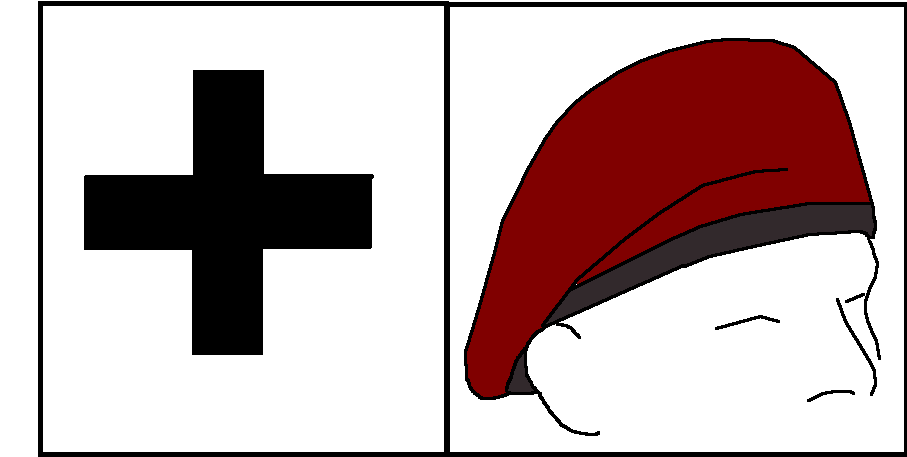
Military Justice Group
- Commander: Lieutenant Commander Cicero, Provost General
- Headquarters: Olympia
- SimpleInsignia:
- Provost: Intertwined Circles
- JAG: Scales
- OfficialInsignia:
- Provost: Golden Gorget
- JAG: Black Beret
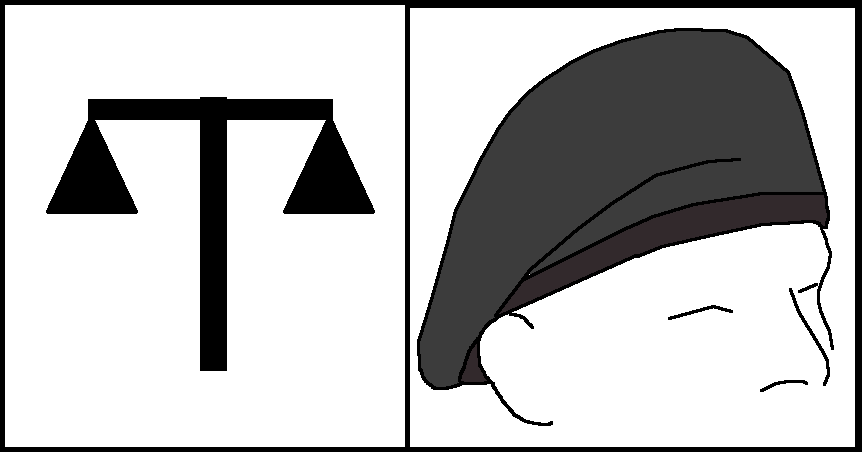
The Military Justice Group is tasked with maintaining both military and civilian law in the Liberated Counties. Like the Engineers, the MJG has two subgroups.
The Provost Group is the most visible of the two, maintaining daily patrols throughout the Liberated Counties. They are adorned with in fine looking uniforms that some find reminiscent of the yeomen. Provost are very well trained.
The Judge Advocate Group handled courts martial and matters of discipline. Small and very selective about who joins their group, the JAG works hard to prove the movement’s devotion to law.
Supply Group
- Commander: Colonel Gold, Commissary General
- Headquarters:
- Simple Insignia: Cube
- Official Insignia: Green Aguilette
The Supply Group is by far the largest of the non-combat groups. They are responsible for procuring, storing and moving foods, weapons, ammunition, and equipment about the Liberated Counties.
The Supply Group is heavily involved with the civilians of the Liberated Counties. The growth and disbursement of food is by far the largest reason, but several towns have become production hubs. Civilians work for the RAM producing things such as cloth, small tools and lumber.
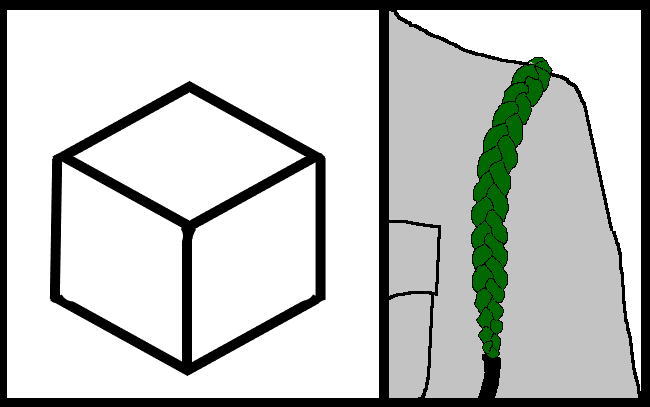
Training Group
- Commander: Lieutenant Colonel Carpenter, Training Commander
- Headquarters: Athens
- Simple Insignia: T in inverted Triangle
- Official Insignia: Wide Brimmed Hats
The Training Group is responsible for the training of new recruits, and developing their professional skills.
Every new member of the RAM in Walker County goes through the training group. The initial basic training happens at their broad Sparta facility, where recruits learn basic exercises, weapons safety, and military knowledge. During this training they are tested to determine who has aptitude for technical, medical or staff training.
From there the trainees go to their advanced school. Sparta is the facility for combat and sergeant’s school, Athens houses their staff school, and Rhodes houses their technical school. Medical trainees are immediately brought to the Medical Group for training.
The trainers themselves are mostly Old Guard and other veterans, willing to pass along their knowledge and experience to the soldiers of the Renaissance Army. New instructors are being trained up, as the RAM prepares to expand its facilities.
Headquarter Groups
Headquarters Groups do not train units, they train staff officers and clerks who are assigned to units and headquarters to assist other officers in their duties. Because of this, their official insignia are simple ropes around the shoulders (aquilettes) that can be worn on any unit’s uniform. The commanders of HQ Groups serve as the senior advisors to the generals, as Chief of Intelligence and Adjutant General.
Intelligence Group
- Commander: Colonel Black, Chief of Intelligence
- Headquarters: Unknown
- Simple Insignia: Question Mark
- Official Insignia: Black Aguilette
The Intelligence Group is responsible for the analysis and dissemination of information. All questions about collection of intelligence are ignored.
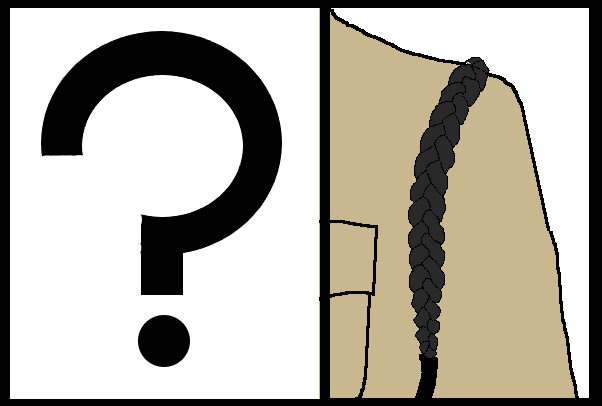
Staff Group
- Commander: Colonel Lily, Adjutant General
- Headquarters: Olympia
- SimpleInsignia:
- Administration: Feather
- Operations: Exclamation Point
- OfficialInsignia:
- Administration: Red Aguilette
- Operations: Blue Aguilette
The Staff Group covers both Administrative (running a unit) and Operations (running a battle) aspects of running a unit or headquarters.
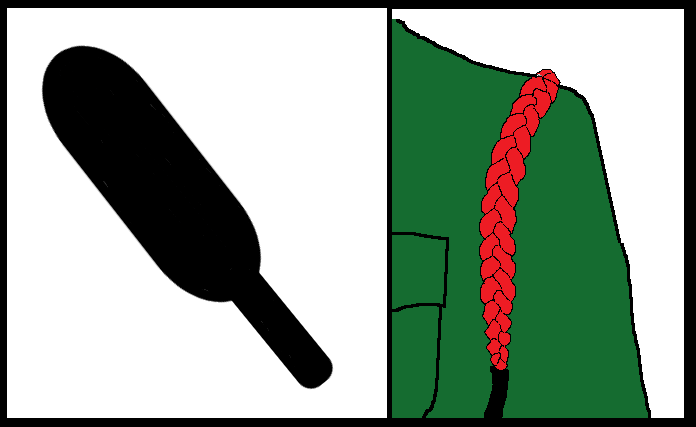
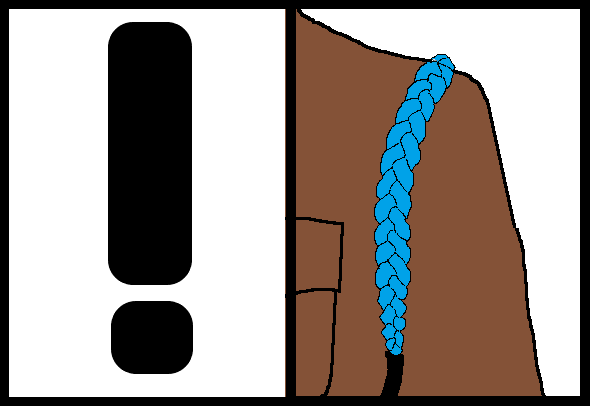
Unoffical Groups
Unofficial Groups are whose existence is common knowledge, but their specifics are secretive or purposely obfuscated.
Naval Group
- Commander: Commander Faro
- Headquarters: Unknown
- Official Insignia: Anchor Badge
The Naval Group is responsible for the use of boats on the lakes and rivers of Minnesota. Sometimes listed as part of the Engineering Group.
Olympian Group
- Commander: Unknown
- Headquarters: Olympia
- Official Insignia: Striped Camouflage Uniforms
The Olympians are the special guardians of the generals and important installations. Their training and equipment are some of the best the RAM can secure. No one knows how many Olympians there are; when asked, their response is ‘Enough.’
Renaissance Marines
- Commander: First Lieutenant Mars
- Headquarters: Unknown
- Official Insignia: Black Shoulder Boards with crossed rifles
Officially a pioneer platoon in the Engineering Group, the Renaissance Marines are far to conspicuous to remain secret. One of the best-trained units in the RAM, the purpose of their existence is the subject of some debate.
Special Services Group
- Commander: Major Fox
The Special Services Group is most commonly known for delivering messages, scouting enemy positions and providing the army’s handful of snipers and sharpshooters. Because the commander is Major Fox, members of the SSG are often called Kits.